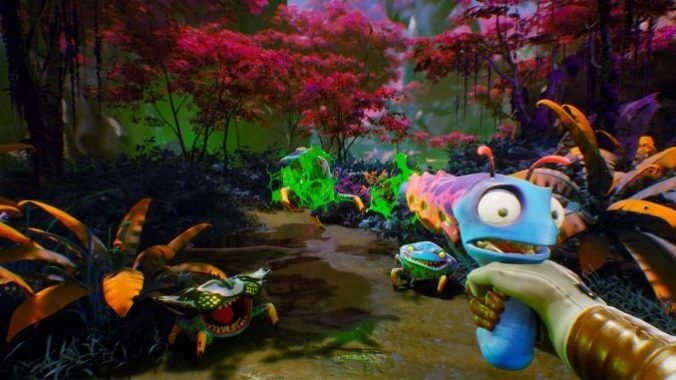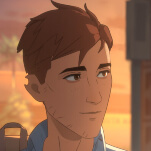High On Life Is Pretty Fun When It Isn’t Making You Groan

As I reflected on my preview of High On Life, I thought it could be one of the better surprises of the year. After all, a game I had zero expectations for, humor I didn’t broadly gel with, and a style that didn’t speak to me had basically Voltron’d into this game I assumed I’d pass on months ago and now really wanted to play. High On Life’s unexpected depth left me with a desire to see it through, though not without reservations. Having played the whole game now, I find my reservations were well founded, but not as entirely as I feared. High On Life is still probably the best surprise I’ve played this year, but it’s not without its flaws.
I’ll just echo my previous sentiments about the game at the top and say that I’m only further impressed with how robust of a first-person shooter High On Life actually is after completing it. Squanch Games, Justin Roiland’s (of Rick and Morty and Solar Opposites) studio, has made games before, like Trover Saves The Universe and Accounting, but High On Life more or less marks a huge jump in the kinds of games they make, with the team nearly tripling in size to realize it. And a shooter is no easy thing to nail, as a likely unending stream of poorly made shovelware examples on Steam proves. But if there’s one thing High On Life does consistently right is nail the distinct look, feel, and yes, even personality, of each of the player’s talking, alien weaponry. None of them fall outside of established archetypes—like shotguns, pistols, submachine guns, and a grenade launcher—and have alternative fires that we’ve seen before, but they feel appropriately potent when deployed, and that’s what mostly matters in a genre of games that can rarely afford to feel off-kilter.
Paired with movement upgrades, like a jetpack, a sentient knife that functions like a whip, as well as a jetpack-assisted slide dash, High On Life successfully channels nu-Doom-lite vibes, sans the heavy metal, hellfire, viscera, and consistent frame rate. It’s a shame then that the game’s broad design doesn’t better take advantage of what’s a killer suite of weapons and movement tech.
High On Life’s wacky sci-fi story, which sees an alien drug cartel called G3 invade Earth in order to use humans as drugs, soon whisks the main character and his sister to the stars, where you visit various planets that sport at least a few alien metropolises, a desert infested with sandworms, and a jungle that appeared to be teeming with fucked up Care Bears. I liked each of these settings visually, but each feels designed more for the exploration side of the game (which hides its Metroid influence for a bit) than its combat. Specifically, the game, which designs encounters almost like an arena shooter, largely eschews layouts and composition that would be conducive to fights like that. The environments you fight in are sometimes tiered to favor verticality, but there are rarely alternate routes that reward the player for exploring. You’ll largely be instinctively dodging and firing back in open spaces that feel like they’ve got just enough to cover to make sure you aren’t killed immediately.
Where the combat, art, and design of High on Life shine are its boss fights against the members of the G3. They are the rare aliens who don’t just kind of look like humans covered in goop and/or are missing eyes. Fights against the G3 are also deft balances of gunskill, platforming, and the aforementioned movement tech. Some of them, like against Douglas, are really tight and feature electrifying platforms and waves of enemies that challenge you on the ground, while Douglas pelts you from above. The fights you have with the Skrendel clan late in the game are kind of burdened by High On Life’s technical limitations, but it just manages to eke out the frenetic fun of battling several sizable and menacing foes at the same time. Some are are not as eventful, like the unfortunately flat final boss, but by and large, taking on these weirdos was the highlight of my time with High On Life and sufficiently proved that given the time and resources, this team could absolutely make a more satisfyingly realized world.
-

-

-

-

-

-

-

-

-

-

-

-

-

-

-

-

-

-

-

-

-

-

-

-

-

-

-

-

-

-

-

-

-

-

-

-

-

-

-

-








































